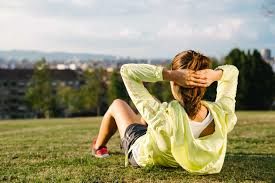“These here are crazy times.” When Dale Ryder of Boom Crash Opera sang those words in Onion Skin, I wonder if he foresaw COVID-19? I’m sure he did. But did he ever believe they could be this crazy?
The sporting, entertainment and cultural sectors have provided me with employment and my own business for over 20 years now. And it doesn’t make me Einstein suggesting we’ve seen nothing so threatening in that time.
Here, we continue a series on issues that the industry will need to address as we come out of COVID-19.
In the second of the series considering the critical questions that need to be answered post the end of the COVID-19 pandemic, we consider whether sport is ready to accommodate prior and new participants.
Episode 2: Revisiting How We Play
One thing that has struck me during this lockdown period has been the amount of people outside exercising. Of course, this is likely simply a factor of many of us being forced / encouraged to spend more time at home due to the pandemic and unable to attend clubs, gyms or group fitness activities. However regardless of circumstance, people exercising is good, right?
Parks across my local area see people partaking in all sorts of activity from walking to running to yoga to kicking the footy to circuits. This is not restricted to before and after traditional work hours. I’ve witnessed it at all times of the day. Of course, of itself, this isn’t a surprise given the concept of the workday has changed dramatically for many of us. Regardless, it is the numbers that I’m seeing that has my attention.
Now I’m reading and hearing daily of how this pandemic will change sport forever. How sport will be played and presented. How we will consume it. How we will participate in it. Much of this speculation is rubbish. My guess is we will see very little difference across most of these areas once the world returns to normality. It may take time but be patient.
Having said that, one area in particular where I think there is potential for change, is how the individual will participate in sport and active recreation. Some believe that sporting clubs not operating, gyms closing and restrictions on how personal trainers operate could mean that the individual is more likely to continue to exercise in an unorganised manner without a financial cost impost once restrictions are eased. There is some merit in that. The longer we are in lockdown, the more chance behaviours transition to habit. Of course, financial implications of this pandemic are real for many, which adds to the risk. All of this could lead to a potential loss of members for existing community sporting clubs, gyms and personal trainers. That is one way of looking at it. Let’s call it the ‘glass one third empty’ way.
Another way to look at it. People are still overtly active. What a great opportunity for sports, gyms and personal trainers. Sure, some will continue exercising in the manner they are now in the parks, alone or with friends. However, others may want to take it to another level. Maybe get fitter in a more structured way. Maybe they want to increase their training load to reach a goal. Maybe they want to apply their present training to a specific sporting outcome. Maybe they are seeking some extra motivation to ensure their new fitness habits don’t revert to their old ways. Maybe they are just craving more social interaction through their training. Maybe this has lit their competitive fire.
Let’s call this the ‘glass two thirds full’ way of looking at this.
Now assuming the ‘two thirds full’ approach has merit, and focusing on Australia’s sporting organisations rather than the commercial providers, this is a great time for introspection. What questions should sporting organisations ask themselves in readiness for us returning to some normality to ensure retention of those that have had to be active in different ways, have stopped being active, or are new (or recently returned) to being active:
- Do they know what they need to know about these cohorts such as their demographics? What are their aspirations in terms of being active? How do they want to be communicated to?
- In particular, what do these cohorts want? What motivates them? What are their barriers? Is it similar to what they are participating in now or before? Is it a step change they are seeking? What has the pandemic taught us about their preferences?
- Are the sport’s products and programs meeting the needs of these cohorts? Will they be compelling offers to satisfy these people when their lives return to being busy?
- Can the sport communicate to these people?
- What can they do to retain those now preferring more unorganised activities or those that have stopped being active for one reason or another (questions they should have been considering well before this pandemic hit us)?
Sports would be remiss to rely on their pre-pandemic approach when considering these opportunities. Sure, it may work in attracting this potential new cohort but why leave that to chance? Take this downtime to do the work to find out, and where possible, ensure your sport is best placed to convert these returning or new people wanting to be more active (and more social!) to your sport. Gyms and personal training businesses should consider a similar approach.
A question for another time: are our local governments ready to accommodate all these people wanting to continue partaking in personal fitness activities in our parks?
Let us know if you have any questions you think need to be answered during and post the COVID-19 pandemic.
Dale Wood’s LinkedIn: https://www.linkedin.com/in/dalehwood/
DHW Collaborations website: https://www.dhwcollaborations.com.au/



